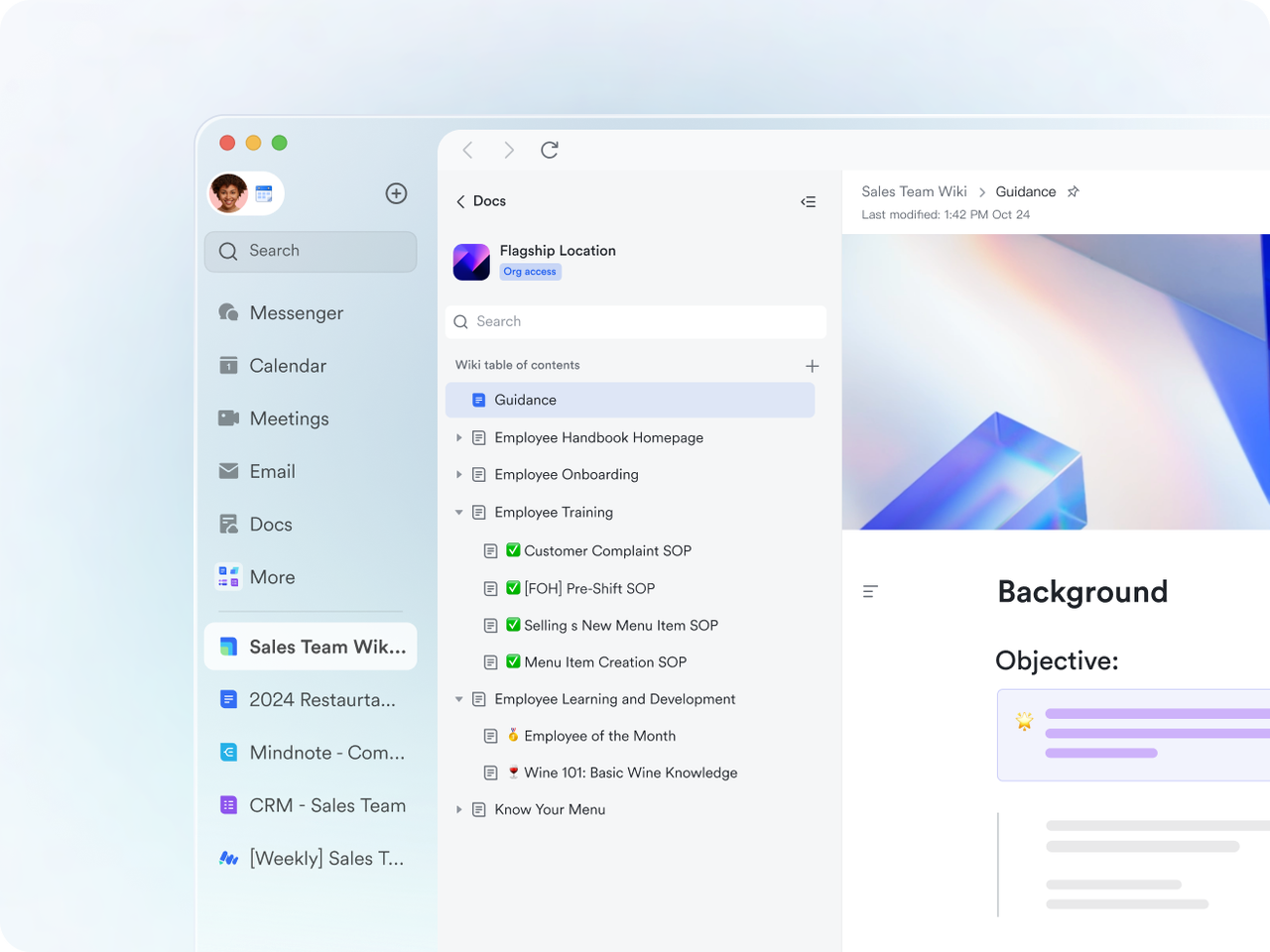Redundancy has a hidden cost. It may happen when two departments unwittingly duplicate the same work, writing project updates in two different systems or discussing a task over and over because no one is quite sure who owns it. More often than we’d like to believe, modern organizations, even ones with the most sophisticated digital devices still suffer from unneeded duplication, which happens because these two systems are not integrated as they should be. Employees can’t remember what they did the previous week and they get stuck jumping in and out of a free-for-all application, re-entering information. The end result can be billions of wasted time weekly in what we do.
Smarter systems have emerged to eliminate duplication by creating a hub to actually do the work. Instead of sharing updates, documents and tasks from one system and emailing between systems to another, project management tools put everything in one flow. Lark is a great example of how to reduce waste from regular work by minimizing the work back and forth across different tools and applications. Lark gets right to the source of the work and allows teams to spend more time on impact and less on redundancy.
Lark Calendar: Preventing the double-booking problem
One of the most common redundancies lies in scheduling. When teams use disconnected apps for calendars, project planning, and task reminders, events are entered multiple times, often inconsistently. This leads to double bookings, missed deadlines, and wasted time aligning schedules.
Lark Calendar solves this by making scheduling part of the same connected ecosystem where projects and tasks already live. A milestone created in Base automatically appears in Calendar. Meetings aren’t just events—they carry the attached Docs and tasks needed to prepare. Instead of duplicating reminders across apps, Calendar ensures everyone is working from the same synchronized schedule. For global teams, its automatic time zone adjustments eliminate the redundancy of cross-checking time conversions manually.
Lark Base: Reducing duplication in project tracking
Inefficiency is often found in project tracking because teams have multiple spreadsheets, databases, or third-party systems that hold similar information. As a result, managers can spend hours reconciling different versions, while employees are updating the same information in multiple locations.
Lark Base cuts through this redundancy as one central agile database for all projects. Marketing may track campaigns via kanban boards, while operations may visually track the movement of logistics through table views. Both reside in the same Base environment, so employees don’t need to duplicate information. Similarly, when people use Lark Base to build up a CRM app, there is no longer the redundancy of maintaining separate client trackers. Customer-facing staff may link their interactions with a client directly to an ongoing project, thereby ensuring that no client updates are duplicated in separate databases. With one source of truth in Lark Base, there are less occurrences of redundancy within team projects, and teams can more clearly see the progress of their projects in real time.
Lark Docs: Removing repeated drafts and scattered files
Few things waste more time than redundant document management. Teams often keep multiple versions of the same file in different locations, editing one copy while another sits outdated. Hours are wasted reconciling which is the “final” draft.
Lark Docs solves this problem by creating a single living document. Teams co-edit in real time, with comments and suggestions built directly into the file. A product team drafting a proposal doesn’t need to email attachments or save countless versions . The same Doc evolves continuously, accessible to everyone. Because Docs link directly to tasks, projects, or meetings, there’s no need to duplicate references across platforms. Knowledge stays unified, eliminating repetitive rework and ensuring the latest information is always at hand.
Lark Messenger: Cutting repeated conversations
Communication redundancy frequently occurs when an announcement gets sent out on multiple channels; an email thread, a chat app, a task tracker. Employees repeat themselves because their tools do not communicate with one another, and important decisions can become dispersed and need to be re-explained in each of its contexts.
Lark Messenger helps reduce this by tying the communications to the work it informs. A team discussion about a client request may generate a task or which prompts an update to the project record in Base. Files shared into a conversation are attached to the context and there is no need to upload the files somewhere else. Rather than having updates and happen in a variety of apps, Messenger helps ensure conversations surface directly into execution and keep teams in sync and lessen back-and-forth redundancies.
Lark Tasks: Automating responsibility to avoid overlap
One of the biggest sources of redundancy is duplicated effort—two people unknowingly working on the same thing, or tasks being recreated in different lists. Lark Tasks prevents this by centralizing responsibility in a single system visible to everyone.
A project manager can assign tasks with deadlines, owners, and priorities, ensuring that accountability is clear. Tasks link directly to Base projects or Calendar events, so work isn’t logged twice. Automatic reminders keep responsibilities visible, while progress updates prevent managers from asking for duplicate status reports. This is also where the power of an automated workflow comes in: reminders, escalations, and updates can run automatically, reducing manual follow-ups that so often result in repetitive communication. By embedding automation, Tasks ensure accountability without redundancy.
Lark Meetings: Eliminating repetitive follow-ups
Redundancy creeps into meetings when discussions happen without a clear system for capturing outcomes. The same points are revisited week after week, and follow-ups are repeated across email threads. Lark Meetings eliminates this inefficiency by connecting discussions to the broader workflow.
When a team gathers for a review, they don’t just talk, they update project records in Base, capture notes in Docs, and assign new tasks on the spot. Recordings and transcripts are saved for reference, so there’s no need to repeat discussions with absent colleagues. Instead of duplicating the same conversations, Meetings ensure progress builds on itself, cycle after cycle.
Conclusion
Redundancies are rarely predictable, yet we experience some version of wasted resources every day. Whether it’s developing repeat trackers, having repeated conversations, or working off duplicate versions of documents, every time different tools create fragmentation and inefficiency, they are like being a sand on the team’s progress that doesn’t make noise. Smarter systems solve this by aggregating the work happening and connecting all the work to flow from ideation to execution.
Calendar helps align our schedules, Base minimizes redundancy in project tracking, Docs consolidate knowledge, Messenger continues purposeful conversations, Tasks auto-generate actions, and Meetings align on the intent. Each of these products demonstrates how we can eliminate redundancy in modern work.
We know that teams that want to maximize output without working longer hours in the day will be required to navigate redundancies. The road forward is straightforward. Smarter, connected systems don’t just proactively mitigate redundancy; they create bandwidth for creativity, focus, and impact. In the modern workplace, eliminating redundancies will not be optional; it will be the bedrock of a smart work process.

